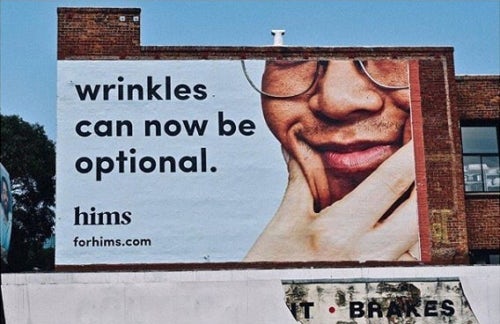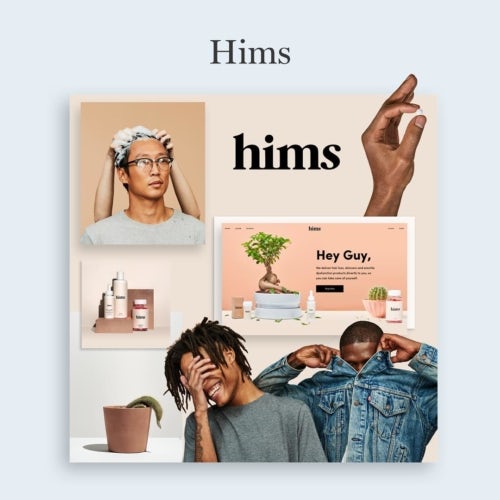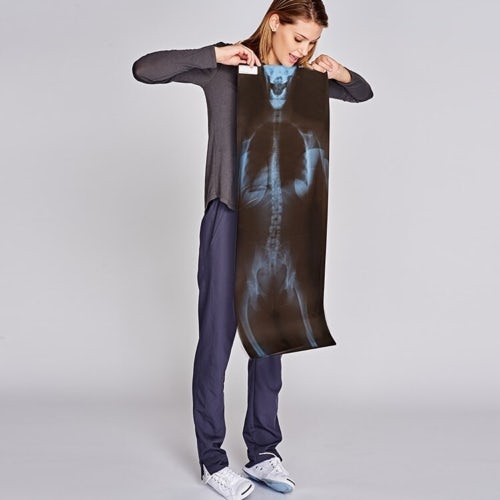As it's revealed that Giorgio Armani will be honoured with an outstanding achievement award at this year's Fashion Awards, Vogue talks to the now 85-year-old designer about his era-defining suiting, the mark he's left on Hollywood, and why you won't find him on Instagram any time soon.
There aren’t many designers who are recognised in every single part of the world. Giorgio Armani, however, is exactly that. Ask anyone, chances are that they’ll not only know of Armani himself, but be able to picture one his perfectly tailored suits, his love of good-taste ‘greige’, or his countless Hollywood moments. That kind of global star power is rare in fashion, especially for a house that is still owned and operated by its founder. And yet Mr Armani — as he is always referred to; never just Giorgio — has built one of the world’s largest independently-owned fashion empires, which, at the age of 85, he still personally oversees.
It couldn’t be more well deserved, then, that this December, Armani will be honoured at The Fashion Awards with an Outstanding Achievement Award. Right from the start, Armani shifted the conversation around tailoring and shaped the look of the late 20th century. He ushered in a new era of softer, more unstructured and most significantly, lighter suiting. In doing so, he became the architect of modern masculinity, a go-to for a new kind of man. He did just as much for women, too, using menswear fabrics to create a powerful uniform — the relaxed, minimalist trouser suit. Armani is the designer who blazed the trail for those such as Calvin Klein, Donna Karan and Jil Sander.
He was a pioneer when it came to establishing a relationship with Hollywood, too, placing dedicated publicists and celebrity liaisons in his Rodeo Drive boutique early on. In 1980, he dressed Richard Gere for the film American Gigolo, with every scene choreographed to work for Armani’s clothes, prompting Gere to ask, “Who’s acting in this scene, me or the jacket?”. Since then, his designs have appeared in more than 200 films, and have been worn by a constellation of megawatt stars, long before red-carpet dressing became industrialised. Back then, it was Diane Keaton, Jodie Foster and Michelle Pfeiffer in Armani. Today, it’s the likes of Cate Blanchett, Celine Dion, Alicia Keys and Elizabeth Debicki.
Armani’s central tenets of classicism, style over fashion, Italian craftsmanship and ease have endured. In 1975, he sold his Volkswagen Beetle to set up the brand. The first year of business saw sales total $14,000 (£11,000) and within a decade, they were topping $100 million (£80 million). Today, Armani has an annual turnover of around $2 billion (£1.6 billion); and the empire spans every layer of the product pyramid, from the crescendo of Armani Privé haute couture to Giorgio Armani ready-to-wear tailoring, Armani Exchange jeans, Armani/Casa furnishings, Armani hotels, Armani cosmetics... The list goes on, but each product is distinctive in its signature Armani simplicity.
Congratulations on receiving the Outstanding Achievement Award. When you look back over your career, what are you most proud of and why?
Having created a style that everybody immediately identifies as mine is certainly an accomplishment, and something that makes me extremely proud. I have worked hard all my life in order to build something true, substantial and enduring. I liberated men and women from many constrictions, turning into the sartorial companion of an epochal change. The fact that my creations have survived the test of time is another thing that makes me proud. Ultimately, my work speaks for itself, and that is the best thing for me.
The fashion industry has changed dramatically since you started as a young designer. What has most inspired the way you work? And what changes – if any – do you feel less enthused about?
The fashion system has changed so much, I sometimes feel I inhabit a completely different environment, compared to when I started. The pace has become faster and faster, and we, as designers, are forced to dish out products at an alarming rate, something I do not like that much. I sure like the competition, as there are more and more designers, just as I like the fragmentation: today there are almost as many styles as there are designers. What I really dislike is the fact that today fashion is mostly about entertainment and communication, sometimes to the detriment of the product. Let’s not forget that we are here to dress people with something authentic, useful, beautiful.
When you launched Armani, you redefined the way men and women dressed. Do you think it’s possible for a designer to create such seismic shifts in fashion today? Is there still such a thing as an original idea?
Back when I started my revolution, I saw men wearing stiff jackets that concealed the body and looked more like cages than anything else. I was looking for the exact opposite: clothes that created ease of movement and comfort. That’s how I came to create the first unstructured jacket in the mid-1970s, getting rid of lining and padding. Bit by bit, I also changed the arrangement of the buttons and modified the proportions: a process that radically transformed this garment, at the same time as men were exploring softer ways to be masculine. It was a moment of deep change, and I was part of that wave. Today, we have the impression that everything has been done and there is no such thing as an original idea or an original silhouette. I believe the contrary: there is still room to create something relevant and new, but doing so requires focus, and the awareness that fashion is first and foremost about hard work, not fame. Authenticity is key, but it is becoming increasingly rare.
Who do you have in mind when you design, and has that person changed over time?
I have always had in mind not a body, but an attitude, when designing. I am catering for the modern man and the modern woman: people who fully live their time and value elegance, thus appreciate my aesthetic. I want to provide my clients with a sense of quiet confidence. The person I design for hasn’t changed over time, but it sure has evolved, in sync with the times.
Your design repertoire goes far beyond fashion. What drives you to create and how do you maintain such unwavering momentum?
As a creative person, what I like best about my job has always been seeing the results of my creativity. The urge to create is innate, I believe. I follow it because creation, for me, means producing something that touches the lives of real people. It can be a jacket, or the impeccable service and elegant furnishing in a hotel. It can even be a piece of chocolate. What keeps it all together is my taste, my constant quest for soulful, sophisticated simplicity. The more I work, the more I feel inspired. Work is also a wonderful anti-aging serum.
Over the years, you have created some brilliant advertising campaigns. Are you relieved to have built your brand pre-social media, or do you wish, like today’s rising designers, that you were able to connect directly with your audience?
I built my empire bit by bit, not in a rush, and that makes it solid. I have built it on the observation of reality, too, right from the very start. I wanted to dress real men and women. I wanted to see them all on the street, not just on the pages of magazines or in the illusive world of television; I wanted my clothing to bring them a new awareness of their worth; I wanted it to suit the changing roles of a society in a constant rush. The imagery I created back then is still relevant, because it feels authentic. Social media is quite fickle, and sometimes too mercantile: I am fine with the way I connected with my audience. I don’t blame the new ways to connect with the public, but I still prefer mine.
Do you look at, or use, social media yourself?
I do look at social media, but don’t use it, as I have better and more urgent things to do. Being a public figure, of course, I created a company profile on Instagram, which is the platform I am most interested in – it’s where we tell the story of the Armani universe. I have no plans to open a personal profile, however; I am a very reserved person and I've always protected my private life. Besides that, I don't want to be influenced by influencers!
What is most important to you today?
Hard work is important, but it’s not everything. Spending time with those that matter to me is important. I do this job out of passion — an absolute, burning, visceral passion. I do it with enthusiasm, commitment and dedication. I never thought that I would achieve such world fame by being a designer. Of course, fame is not what pushed me towards this path. It wasn’t money either — it can’t buy elegance. Making things: that’s what has always motivated me.
What, if anything, do you regret?
I don’t really suffer regret, as it is a fairly pointless feeling. However, if I were to relive my life, I’d spend more time with my loved ones.
The Armani suit is era-defining. What was on your mind at that time: what music were you listening to, who were you surrounding yourself with? What fuelled that aesthetic?
I am an extremely pragmatic creator: first and foremost I look at what’s around me. I did so when I created those famous suits, looking at men of my age – I was 40 at the time – and what they wanted to wear, which were not the suits of their fathers. My sister and her friends caught up on the same jackets, and the rest is history. It might sound funny, but the sound of modernity was disco, and I was listening a lot to that.
What music do you listen to today, and is there anyone you would still like to dress?
I listen to any kind of music, from pop to classic, from old to new. I like rhythm. As for the musicians I’d like to dress, there are many – but to tell you the truth, I find the idea of a man buying his first important suit, or a woman choosing her attire for a meaningful career advancement, finding what they need at an Armani store, far more rewarding than the idea of dressing another celebrity. I’ve been there and am still there with pleasure, but dressing real people in real life is my ultimate goal.
What makes you smile when you wake up in the morning?
I like to do things, to work: that puts me in a good mood. It’s no coincidence that my happy place, where I feel the best, is my office: it’s where I achieve my visions, where what’s in my head becomes real and tangible. It’s the most incredible feeling; it fills me with energy and adrenaline every single time.
How do you quieten your mind at the end of the day?
At the end of the day I take time for myself, just to think. I usually have a simple dinner at home, after which I like to relax in front of the television watching a good film or a TV series. I try not to stay up too late, because I have another busy day ahead of me the next day
What is the biggest misconception about you as a designer?
I think most of the people have an almost ascetic idea of me. Sure, I love sobriety and can do less is more, but I am also a bon vivant and an eccentric. As I told you, I was listening to disco when I created my famous suits. Today, from time to time, I go to Giorgio’s, the exclusive members-only evening at the Armani/Privé Club in Milan.
What advice would you give young designers wishing to follow in your footsteps?
The scenario today is much more complex. Standing out requires utmost dedication because the competition is fierce. For a new designer, I would suggest, first of all, to thoroughly study people’s demands and then to respond to these needs with something that is new, fresh, meaningful. It is the only way to tackle today’s fashion world without ever getting discouraged.
Other than fashion, what makes you happy?
I am simply happy to live, to have people who I trust at my side, to be healthy. I am a simple person, with simple, yet deep, feelings.


















































